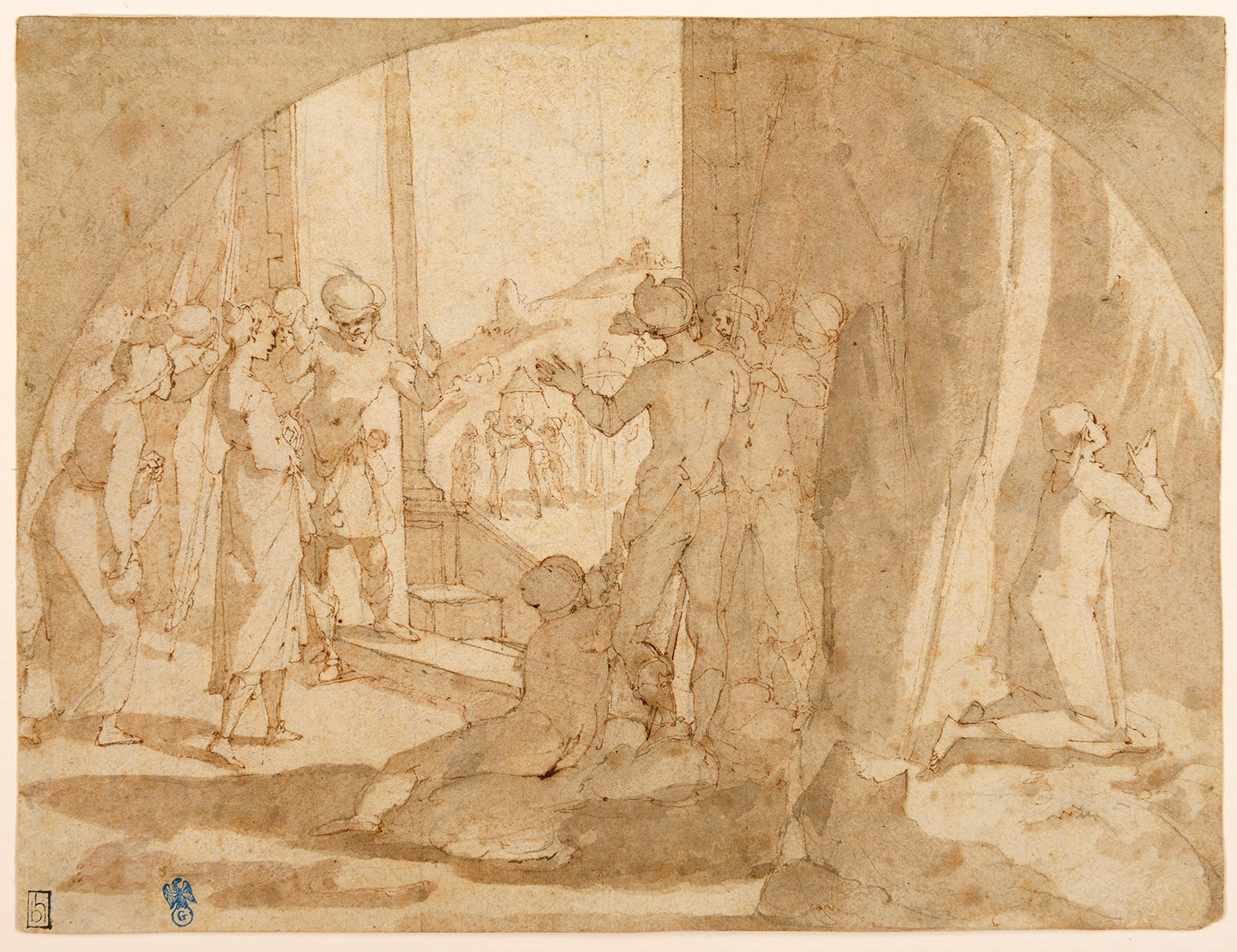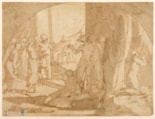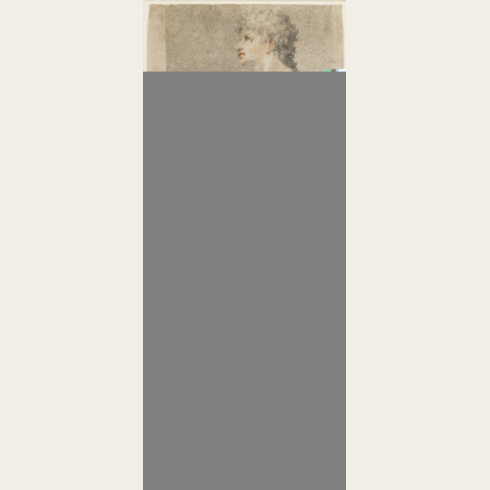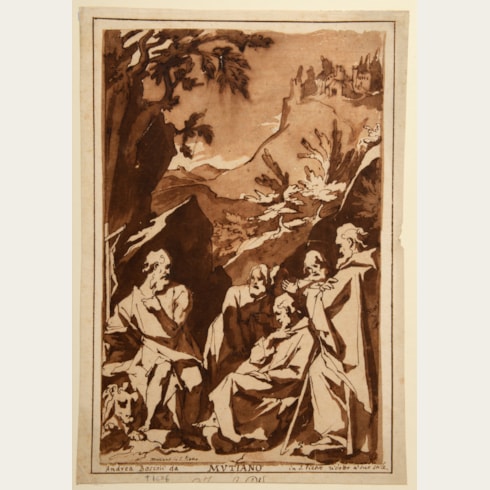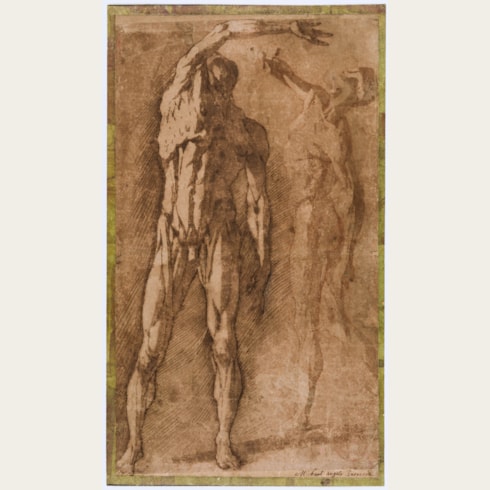Andrea BOSCOLI
(Florence 1560 - Florence 1608)
Judith Preparing to Visit Holofernes
Inscribed Buonacorsi dit / Perino del Vaga / 1500-47 and Sammlung Bateson, in a modern hand, on the backing sheet.
156 x 208 mm. (6 1/8 x 8 1/8 in.)
A slightly larger variant of the present sheet is in the collection of the Princeton University Art Museum in New Jersey.
Amédée-Paul-Émile Gasc (1817-1866) seems to have begun collecting drawings in the 1830s. (His younger brother Charles Gasc was also a collector of drawings, and the two brothers sometimes sold or gifted drawings to each other.) In 1858 Paul-Émile sold some drawings to the Musée des Beaux-Arts in Orléans, followed two years later by a further donation of drawings to the Musée des Beaux-Arts in Dijon. In 1861, however, Paul-Émile Gasc decided to sell his entire collection of around 1,360 drawings in two auctions, held in Paris in January and April of that year. This drawing later belonged to the eminent English biologist William Bateson (1861-1926), and was later acquired by the German architect and decorator Bernhard Himmelheber (1898-1966), whose collection comprised mainly German and Italian drawings from the 16th to the 19th centuries.
Andrea Boscoli trained in the Florentine studio of Santi di Tito and was admitted into the Accademia del Disegno in 1584. He visited Rome as a young man in the early 1580’s and, like many artists before him, avidly copied the frescoes of Polidoro da Caravaggio that decorated the facades of several palaces there. Between 1582 and 1600 Boscoli worked primarily in Florence, with brief stays in Siena and Pisa. His earliest known painting is the Martyrdom of Saint Bartholomew, painted in 1587 for the cloister of the Florentine church of San Pier Maggiore. He was also involved in the decorations for the apparati celebrating the marriage of the Grand Duke Ferdinando I de’ Medici to Christina of Lorraine in 1589.
In 1592 Boscoli completed a fresco cycle for the Villa di Corliano at San Giuliano Terme, near Pisa, and the following year painted an altarpiece of The Annunciation for the Chiesa del Carmine in Pisa. In 1597 Boscoli painted a Visitation for the Florentine church of Sant’ Ambrogio, followed two years later by a Crucifixion for SS. Apostoli, now lost, and an altarpiece of The Preaching of Saint John the Baptist in the church of San Giovanni Battista in Rimini, signed and dated 1599. Between 1600 and 1605 Boscoli worked mainly in the Marches, painting frescoes and altarpieces for patrons and churches in Fano, Fabriano, Macerata, Fermo and elsewhere, while the last years of his career were spent between Florence and Rome.
Relatively few paintings by Boscoli survive today, and it is as a draughtsman that he is best known. His drawings were highly praised by his biographer Filippo Baldinucci (who noted that ‘he drew so well...without lacking a boldness and an extraordinarily skillful touch’) and were avidly collected. Some six hundred drawings by Boscoli are known, with significant groups of drawings in the Uffizi in Florence (many of which were once part of the extensive collection formed by Cardinal Leopoldo de’ Medici), the Istituto Nazionale per la Grafica in Rome and the Louvre.
Provenance

